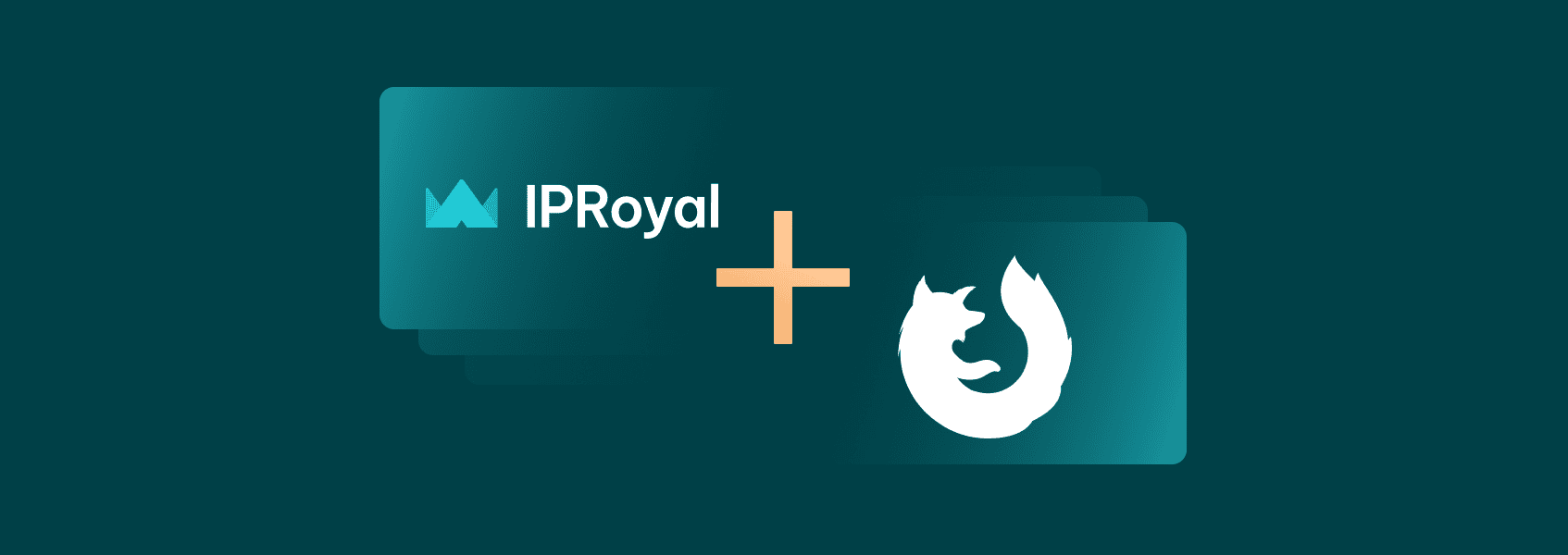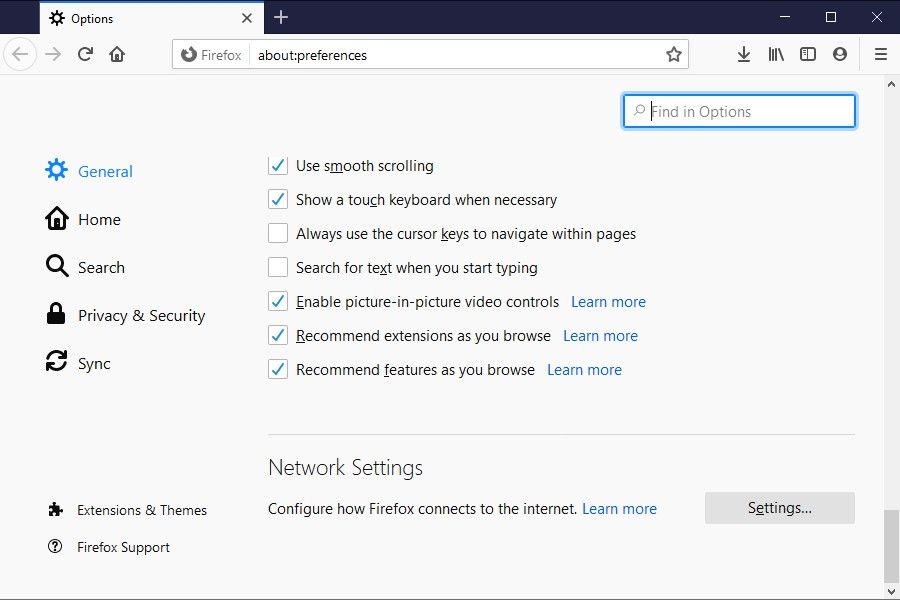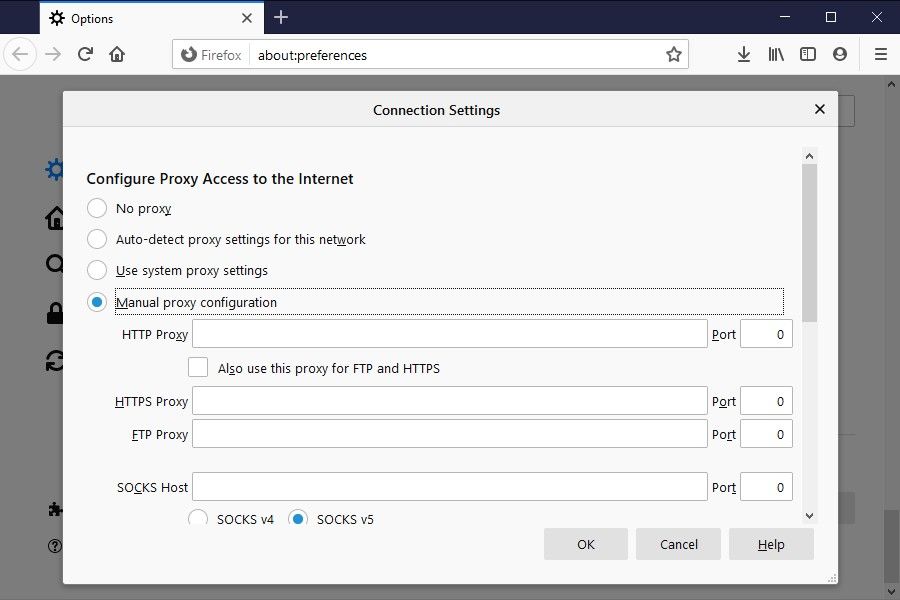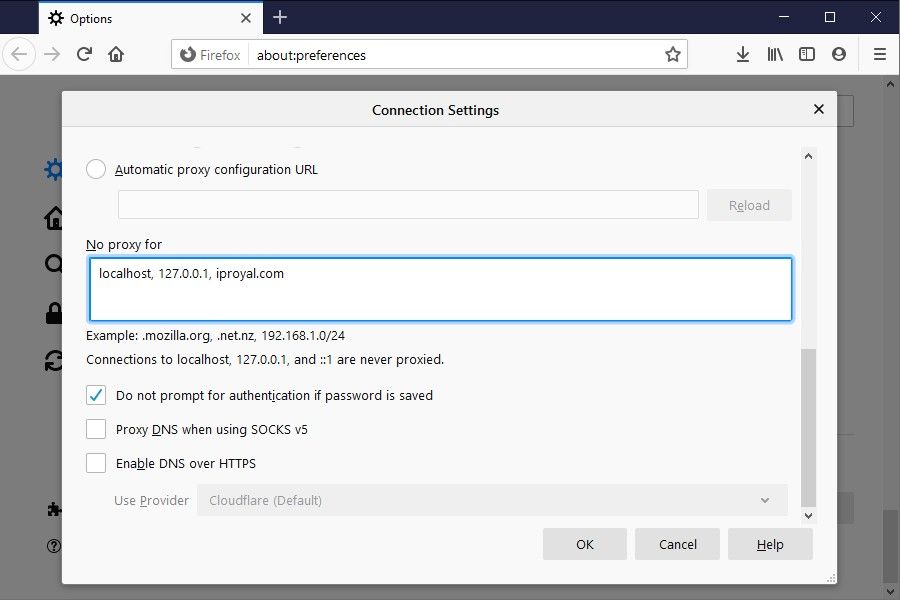How to Configure a Mozilla Firefox Proxy


Milena Popova
Last updated -
In This Article
If you want your web browser traffic to go through a proxy exclusively, then the Firefox browser from Mozilla is arguably the best option today. Like most other browsers Firefox will use your systems proxy settings by default. However, it does have the option to configure separate proxy settings that only affect your browsing.
How to Setup a Mozilla Firefox Proxy
Firefox browser lets you directly connect to a proxy without using third-party tools or applications. Using a reliable proxy server grants you anonymity, access to geo-blocked content, and improves overall security. To set up and use a Mozilla Firefox proxy, follow these steps:
Open Firefox and on the top right-hand corner, click the menu button, and select Options .
At the bottom of the General panel page, go to the Network Settings section.

Click Settings . It will open the Connection Settings dialogue box. The dialogue box gives you the following options:
- No proxy: Select this option if you don’t want to use a proxy server.
- Auto-detect proxy for this network: If you choose this option, Firefox will automatically detect proxy settings for your network.
- Use system proxy settings: With this option, Firefox will use your operating system’s proxy settings configuration. If there aren’t any, then Firefox will not use proxy settings.
- Manual proxy configuration: This option allows you to select custom proxy settings that apply to Firefox alone. You would use this option only if you have access to more than one proxy.

Once you choose this option, you need to configure your proxy server settings yourself. Ensure you get the configuration settings you need from your proxy service provider or system administrator before selecting this option. If you’re going to use the same settings for the HTTPS and FTP protocols , check the Also use this proxy for FTP and HTTPS option. If your HTTP, HTTPS, and FTP proxies are different, then leave this box unchecked.
- SOCKS Host
If you’re configuring a SOCKS proxy , input the proxy’s address into SOCKS Host and the port in the Port box. Remember to leave the HTTP, HTTPS, and FTP proxy settings blank. Keep in mind that SOCKS v5 is the default connection for Firefox. If your Mozilla Firefox proxy uses the older standard, then you need to select SOCKS v4. If you’re not sure about the proxy connection type, leave the settings on default.
- Automatic proxy configuration URL
This is the option you should use if you have a proxy configuration pack. Enter the URL and click Okay to load the proxy configuration and save changes. You can also use file: and data: schemes here. For example, file:///c:/proxy.pac or data:,function FindProxyForURL(){return “HTTPS example.iproyal.com:3443 ”;}. The Reload button will reset your proxy settings and reload the proxy configuration that is currently available.
- No Proxy for
This setting allows you to list addresses that will ignore the proxy settings. By default, this list includes addresses that point to your local PC, Localhost , and 127.0.0.1. This allows the Firefox browser to directly access a web server running on your PC rather than going through the proxy.

Adding other IP addresses and domain names to this list is easy - just make sure a comma and space separate them. For example, if you want Firefox to access IPRoyal.com directly, you simply add iproyal.com to the list.
If Firefox cannot access your proxy server, if your proxy server or internet connection is down, or if you wrongly entered the proxy configuration, you will get an “Unable to find the proxy server” message when you try to access any website. You will need to reset the proxy server settings in Firefox and either disable the proxy server or correct the proxy settings for you to access the internet.
You may configure your Firefox settings correctly, have a good ISP, but having a bad proxy service provider will ruin your browsing experience. 
Why Choose IPRoyal as Your Mozilla Firefox Proxy Provider
All proxies are not the same. They differ by their reliability, size of IP pool, supported protocols, purpose, and cost. At IPRoyal , we proudly offer excellent service to our clients from all over the world. Constant monitoring and millions of servers worldwide ensure minimal downtime, making our service second to none. By operating servers around the world, we have access to vast numbers of IP addresses.
Additionally, we have a large bank of both IPv4 and IPv6 addresses for private, residential, rotating, and mobile proxies . Basically, there are two types of proxy IP protocols: HTTPS and SOCKS5. HTTPS proxies only work with HTTPS and HTTP webpages, while SOCKS5 proxies work with any traffic. HTTP proxies are designed to work specifically with the HTTP protocol. This means they get better connection speeds and work better with web browsers, but unfortunately, they’re not as secure and flexible as SOCKS proxies.
Final Thoughts
At IPRoyal , we don’t want you to miss out, so all our proxies allow both HTTP/HTTPS and SOCKS connections. Your needs will determine the type of proxy that works best for you. Whether it’s web scraping and crawling, sneakers, or social media automation, we offer solutions to meet all your needs. The proxy service you choose shouldn’t break your bank. We provide flexible proxy packages that address all your proxy needs at affordable prices!

Author
Milena Popova
Content Writer
With nine years of writing experience, Milena delivers exceptional content that informs and entertains readers. She is known for her reliability, efficiency, and cooperative nature, making her a valuable team player. Milena’s passion for IT and proxy networks fuels her content creation, ensuring accessibility for all. Outside of work, you’ll find her reading a good book or keeping up with the ever-evolving world of IT.
Learn more about Milena Popova


